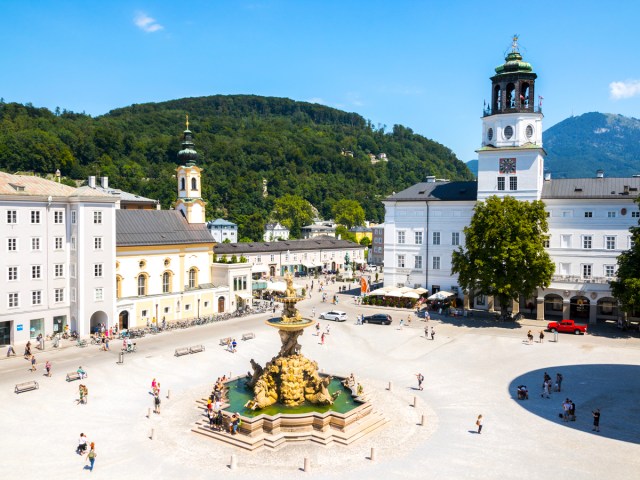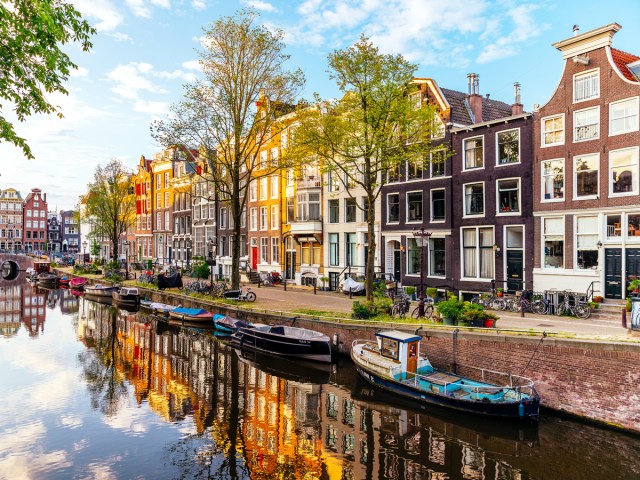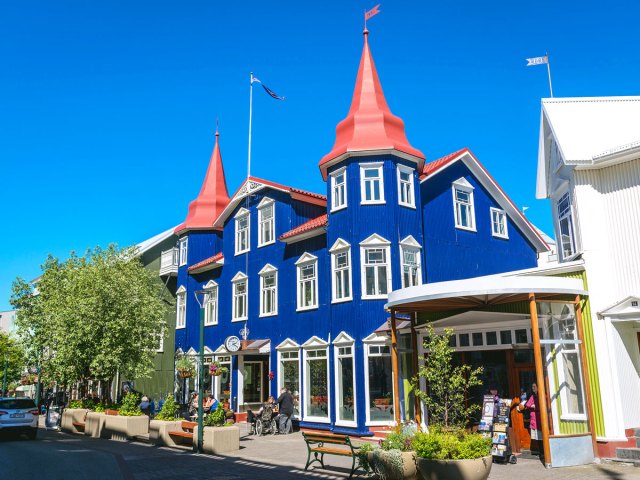One of the most exhilarating parts of international travel is exploring the subtle nuances of everyday life in different countries. Street naming conventions are a prime example. Consider the Avenue des Champs-Élysées in Paris, a world-famous thoroughfare leading to the Arc de Triomphe. Its name is instantly recognizable, especially to English speakers, thanks to the French loanword “avenue.” However, not all names are as familiar, which can make navigating international streets a challenge. From the vibrant hustle of London’s Piccadilly Circus to the efficiency of the German Autobahn, here are 10 names for streets and squares around the world that reflect fascinating cultural differences.
Circus

While the name “circus” might evoke images of acrobats and clowns, Piccadilly Circus in London’s West End is actually a vibrant traffic junction and public gathering space dating to the early 19th century. Famous for its neon signs, billboards, and theaters, Piccadilly Circus also transforms into a festive spectacle during the holiday season. For those unfamiliar with British terminology, the word “circus” refers to a circular area where multiple roads converge, derived from the Latin word circus, meaning “ring.”
Paseo

In Spanish, the terminology for streets and walkways varies based on their size and function, much like in English. Among the most common routes are paseos, which are public walkways or boulevards often adorned with trees. A stunning example is Madrid’s Paseo del Prado, a boulevard that is also a UNESCO World Heritage Site due to its cultural importance. This route is a gateway to some of the city’s most famous attractions, including the Prado Museum, the Royal Botanical Garden, and the Fountain of Neptune.
Chowk

No trip to Old Delhi, India, is complete without a visit to Chandni Chowk, which translates to “Moonlight Square.” This famous street market is one of the oldest and busiest in the city, built by the Mughal emperor during the 17th century. The Hindi term chowk translates to “square” or “courtyard” in English. The historical square earned its name from the canals that once reflected moonlight through the market, though they no longer exist. However, the cultural significance of Chandni Chowk is still apparent centuries later. The market stalls are brimming with spices, dried fruit, handmade jewelry, essential oils, and brightly colored saris.
Close

Edinburgh, Scotland’s capital, is home to Mary King’s Close, a historic alleyway with a sinister reputation. In the Scots language, “close” (pronounced “klohs”) is a term for a narrow alleyway, typically no wider than 4 feet. This particular close is named after Mary King, a merchant who resided there during the 17th century. Today, the cobbled pathway is open for tours led by costumed guides telling ghastly tales of the alleyway’s eerie past. Most of the dead-end alleyways that extend from Edinburgh’s famous Royal Mile — Old Town’s main street — are also called “closes.” Visitors looking for a thoroughfare should search for a “wynd.” These narrow roadways connect to more prominent streets in the capital city.
Platz

In Germany and other German-speaking countries such as Austria, Belgium, and Switzerland, platz refers to a town square. These squares are culturally significant across Europe, serving as community focal points for events, markets, and holiday celebrations. Many of these squares are centuries old, such as Residenzplatz in Salzburg, Austria. Meaning “Residence Square,” Residenzplatz is a 16th-century forecourt adjacent to the magnificent Salzburg Cathedral in the heart of Salzburg’s Old City. This historical square hosts various public events, from musical performances to festive holiday markets.
Gracht

Many cities around the world were built on a canal system, but few still utilize them as much as the Dutch. In the Netherlands, canals are just as vital as streets, so in cities like Amsterdam, roadways are often named after the canal, or gracht, they parallel. Brouwersgracht, one of central Amsterdam’s most scenic streets, runs along the Brouwersgracht, a canal that translates to “Brewer’s Canal” for the breweries that once lined its banks. Known for their charming atmosphere and historical significance, the street and canal are dotted with scenic stone bridges, Dutch shops and bakeries, and various museums and art galleries.
Crescent

The Royal Crescent in Bath, England, is famous for its row of terraced houses lining a curved street. In the U.K., any street that curves into a crescent or semicircle can be designated as a “crescent” rather than a “street.” At the address No. 1 Royal Crescent in Bath, visitors can explore a townhome beautifully converted into a museum, depicting what life was like in this fashionable 18th-century spa town. The historical facades of the Royal Crescent are popularly used in film and television today, including the hit show Bridgerton and a recent adaptation of Jane Austen’s Persuasion.
Scramble Crossing (Sukuranburu-kōsaten)

In the U.S., they’re known as “crosswalks,” while in the U.K., they’re called “zebra crossings.” However, in Tokyo, there’s a pedestrian crossing so massive (and chaotic) that only one name is appropriate: “scramble crossing.” During peak traffic, the Shibuya Scramble Crossing sees thousands of pedestrians crossing simultaneously in every direction. Flanked by the Shibuya Station, shopping centers, and entertainment venues, this bustling intersection epitomizes urban life in Tokyo. At a “scramble crossing,” vehicles stop in all directions, giving pedestrians full command of the intersection. These crossings are common in Japanese cities that feature heavy foot traffic.
Rue

English speakers will readily recognize many street names in France, as several street suffixes are borrowed from the French language. Terms like “avenue,” “boulevard,” “promenade,” and “route” are familiar loanwords. However, one popular naming convention often gets lost in translation: rue, the French word for “street.”
The term is commonly used in France and other French-speaking nations, including Belgium, Luxembourg, Monaco, Switzerland, and even parts of Canada. One well-known example of this is the Rue de Rivoli, named after the Battle of Rivoli, a notable victory for Napoleon Bonaparte. The street runs parallel to the Tuileries Garden and Seine River, passing landmarks such as the Louvre Museum and the Place de la Concorde, in which place is French for “square.”
Autobahn

The Autobahn is perhaps the world’s most prominent high-speed highway system. It connects many of Germany’s major cities — including Berlin, Munich, Frankfurt, and Hamburg — and expands into parts of neighboring countries. Some sections of the Autobahn have no federally mandated speed limit as long as weather permits, allowing users to travel across regions at high speeds.
The term Autobahn has the same meaning as “expressway” in English — it is a combination of the German words auto, meaning “car,” and bahn, meaning “road” or “way.” Since 1953, The official term for this road system is Bundesautobahn (“federal motorway”), though it’s commonly shortened to Autobahn.
More from our network
Daily Passport is part of Optimism, which publishes content that uplifts, informs, and inspires.























